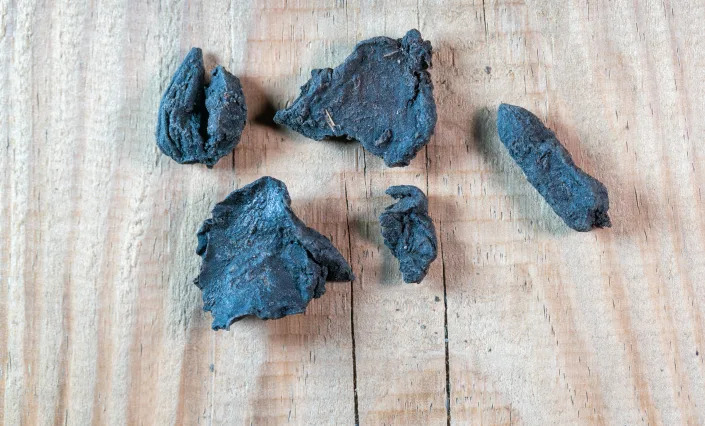What is aconite poisoning? 'Highly toxic' substance was behind mass poisoning at Ontario restaurant
Asymina Kantorowicz
·Writer
Wed, September 14, 2022
Aconite, or aconitum napellus, is a perennial herb that is native to western and central Europe. The blue/dark purple flower is also known as monkshood or wolfsbane.
(Photo via Getty Images)
A Toronto doctor says the substance behind a mass poisoning in Ontario is highly toxic.
Twelve people became sick and were hospitalized, four of whom required intensive care, after dining at Delight Restaurant & BBQ in Markham on Aug. 28.
York Region Public Health confirms the cause behind the aconite poisoning, which is a type of food poisoning, was a contaminated batch of Mr. Right brand Keampferia Galanga Powder (sand ginger powder). Health Canada has recalled the product and recommends individuals and businesses dispose of the product out of an abundance of caution. The health authority says the powder was sold in Ontario, Quebec, Alberta and British Columbia, and may have been distributed in other parts of the country as well.

Mr. Right brand Keampferia Galanga Powder (sand ginger powder) has been recalled after a mass poisoning at an Ontario restaurant. (Photo via Health Canada)
Although aconite poisoning is rare, Dr. Prateek Lala, an assistant professor and associate director of the University of Toronto’s applied clinical pharmacology program, says knowing the signs and symptoms of it can help when seeking treatment.
What is aconite poisoning?
Aconite, or aconitum napellus, is a perennial herb that is native to western and central Europe. The blue/dark purple flower is also known as monkshood or wolfsbane.
Every part of the plant, especially the root, contains toxins. The deadliest of those toxins is aconite. In raw form, aconite plants are extremely poisonous. It can be neutralized by boiling or steaming the plant.
Lala says the plant can cause problems if it’s not processed properly.
“These compounds, aconitine, the toxic compound found in these plants, is very poisonous and if you have a pure amount of aconitine, as little as two milligrams is thought to be enough to kill an average adult, so it takes very little,” he says.
Aconite poisonings don’t happen often in Canada.
The most recent one happened in B.C. earlier this year when a group of people ended up in hospital with aconite poisoning after eating a meal made with sand ginger powder.
Aconite is often used in traditional Chinese medicine
Along with Asian cuisine, aconite is also used in traditional Chinese medicine and Ayurvedic Indian medicine. Its alleged therapeutic purposes include joint and muscle pain.
Lala says in these practices it’s processed in a way that “theoretically should neutralize the toxic compounds,” but in some cases, it doesn’t always work.
“Part of the issue in those circumstances is that there's very little quality control and regulatory oversight when it comes to the production of those kinds of medicinal products, so you never really know what you're getting,” he explains. “There may be residual poisonous compounds left in those substances.”
Lala acknowledges there’s an increasing interest in alternative forms of medicine and says he wouldn’t be surprised to see more cases of aconite poisoning in the future.
“People should use the larger and more well-known companies that produce these products rather than individual people who might be producing and selling them on their own,” he advises.

The aconite plant is used in traditional Chinese medicine and Ayurvedic Indian medicine.
Signs and symptoms of aconite poisoning
People can experience symptoms anywhere from a few minutes up to one hour after ingesting aconite.
Symptoms of aconite poisoning can include numbness and tingle on the lips, tongue, face and extremities, diarrhea, stomach pain, vomiting, arrhythmia and heart-related complications.
“You can get very fast rhythms that can cause significant problems in terms of circulation because the toxin itself, the aconitine, is both a neurotoxin as well as a cardiac toxin so you sometimes get seizures, people falling into comas if there’s enough of a dose,” Lala tells Yahoo Canada.
The pharmacology professor says if someone dies from the poisoning, it typically happens from highly irregular heart rhythm or respiratory paralysis.
A person with a pre-existing heart condition may also be predisposed to more severe health effects. However, even healthy people who have no outstanding health problems can die from a large enough dose, Lala says.
What does treatment for aconite poisoning look like?
There is no antidote for aconite poisoning.
Lala says treatment is most often supportive. For example, if a person has an unusual heart rhythm or low blood pressure, then a doctor can give them medicine to help correct those issues.
The professor also notes that the sooner someone gets medical help after experiencing symptoms of aconite poisoning, the better they can be treated.
“If people go to the hospital early enough, within an hour of ingesting the poison, you can sometimes treat the patient with oral activated charcoal to try and inactivate the poison before it gets absorbed into the system,” he says. “After that period of time, there's not much you can do once it's already been absorbed.”
A Toronto doctor says the substance behind a mass poisoning in Ontario is highly toxic.
Twelve people became sick and were hospitalized, four of whom required intensive care, after dining at Delight Restaurant & BBQ in Markham on Aug. 28.
York Region Public Health confirms the cause behind the aconite poisoning, which is a type of food poisoning, was a contaminated batch of Mr. Right brand Keampferia Galanga Powder (sand ginger powder). Health Canada has recalled the product and recommends individuals and businesses dispose of the product out of an abundance of caution. The health authority says the powder was sold in Ontario, Quebec, Alberta and British Columbia, and may have been distributed in other parts of the country as well.
Mr. Right brand Keampferia Galanga Powder (sand ginger powder) has been recalled after a mass poisoning at an Ontario restaurant. (Photo via Health Canada)
Although aconite poisoning is rare, Dr. Prateek Lala, an assistant professor and associate director of the University of Toronto’s applied clinical pharmacology program, says knowing the signs and symptoms of it can help when seeking treatment.
What is aconite poisoning?
Aconite, or aconitum napellus, is a perennial herb that is native to western and central Europe. The blue/dark purple flower is also known as monkshood or wolfsbane.
Every part of the plant, especially the root, contains toxins. The deadliest of those toxins is aconite. In raw form, aconite plants are extremely poisonous. It can be neutralized by boiling or steaming the plant.
Lala says the plant can cause problems if it’s not processed properly.
“These compounds, aconitine, the toxic compound found in these plants, is very poisonous and if you have a pure amount of aconitine, as little as two milligrams is thought to be enough to kill an average adult, so it takes very little,” he says.
Aconite poisonings don’t happen often in Canada.
The most recent one happened in B.C. earlier this year when a group of people ended up in hospital with aconite poisoning after eating a meal made with sand ginger powder.
Aconite is often used in traditional Chinese medicine
Along with Asian cuisine, aconite is also used in traditional Chinese medicine and Ayurvedic Indian medicine. Its alleged therapeutic purposes include joint and muscle pain.
Lala says in these practices it’s processed in a way that “theoretically should neutralize the toxic compounds,” but in some cases, it doesn’t always work.
“Part of the issue in those circumstances is that there's very little quality control and regulatory oversight when it comes to the production of those kinds of medicinal products, so you never really know what you're getting,” he explains. “There may be residual poisonous compounds left in those substances.”
Lala acknowledges there’s an increasing interest in alternative forms of medicine and says he wouldn’t be surprised to see more cases of aconite poisoning in the future.
“People should use the larger and more well-known companies that produce these products rather than individual people who might be producing and selling them on their own,” he advises.
The aconite plant is used in traditional Chinese medicine and Ayurvedic Indian medicine.
(Photo via Getty Images)
Signs and symptoms of aconite poisoning
People can experience symptoms anywhere from a few minutes up to one hour after ingesting aconite.
Symptoms of aconite poisoning can include numbness and tingle on the lips, tongue, face and extremities, diarrhea, stomach pain, vomiting, arrhythmia and heart-related complications.
“You can get very fast rhythms that can cause significant problems in terms of circulation because the toxin itself, the aconitine, is both a neurotoxin as well as a cardiac toxin so you sometimes get seizures, people falling into comas if there’s enough of a dose,” Lala tells Yahoo Canada.
The pharmacology professor says if someone dies from the poisoning, it typically happens from highly irregular heart rhythm or respiratory paralysis.
A person with a pre-existing heart condition may also be predisposed to more severe health effects. However, even healthy people who have no outstanding health problems can die from a large enough dose, Lala says.
What does treatment for aconite poisoning look like?
There is no antidote for aconite poisoning.
Lala says treatment is most often supportive. For example, if a person has an unusual heart rhythm or low blood pressure, then a doctor can give them medicine to help correct those issues.
The professor also notes that the sooner someone gets medical help after experiencing symptoms of aconite poisoning, the better they can be treated.
“If people go to the hospital early enough, within an hour of ingesting the poison, you can sometimes treat the patient with oral activated charcoal to try and inactivate the poison before it gets absorbed into the system,” he says. “After that period of time, there's not much you can do once it's already been absorbed.”






























